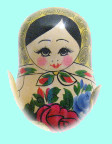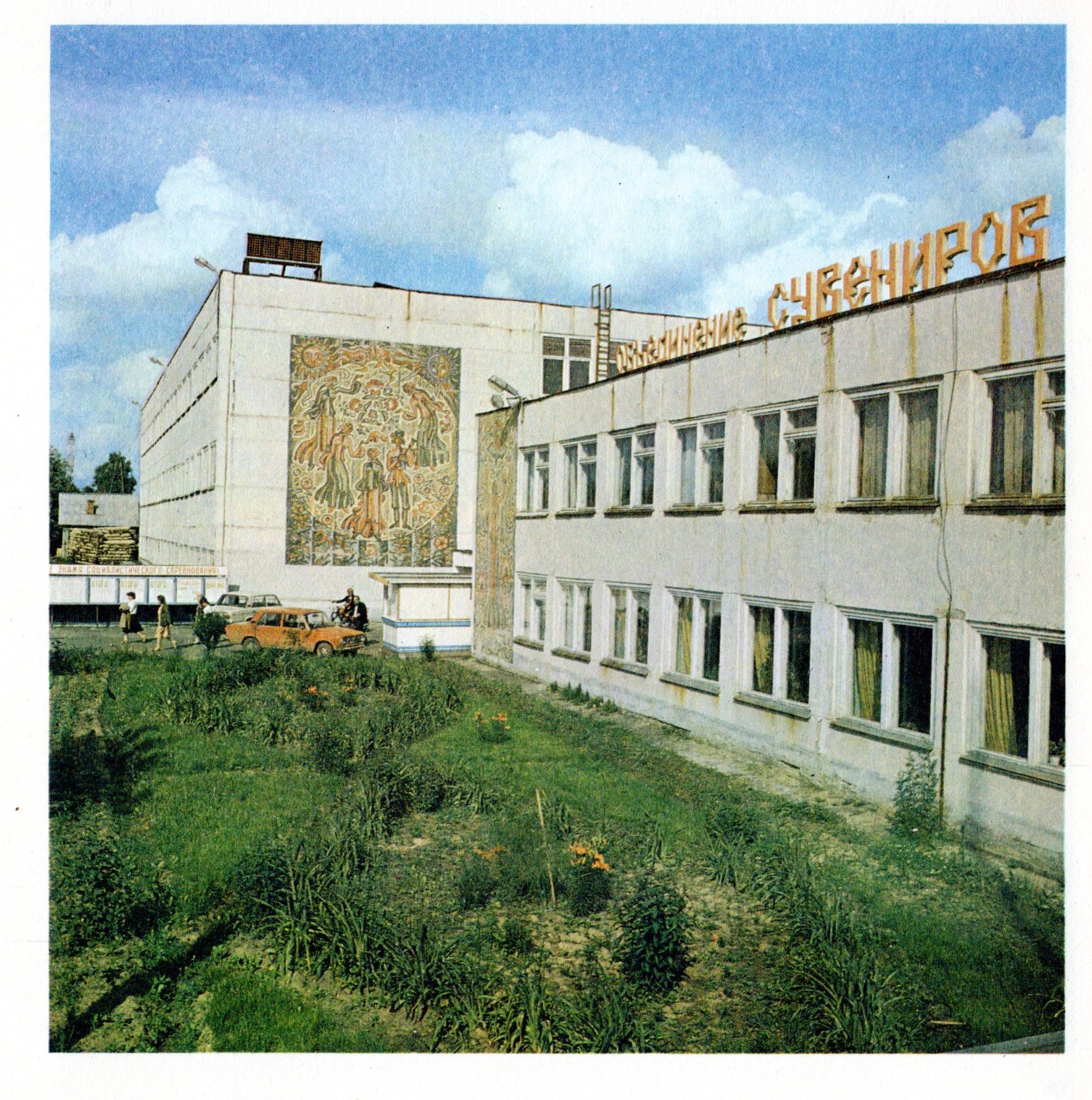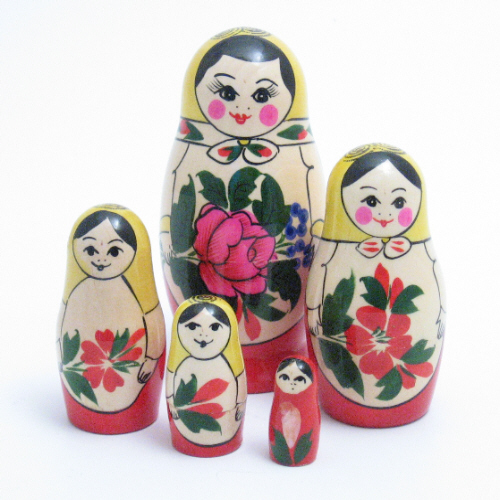

RUSSIAN DOLLS AND SEAGULL SHOP CARDIGAN


 This most simple of dolls usually painted with a
yellow head scarf and red dress with a rose design on the front. The
Semyenov factory existed well before the revolution mainly producing
wooden items of tableware. In about 1932 it was set to produce a wide
range
This most simple of dolls usually painted with a
yellow head scarf and red dress with a rose design on the front. The
Semyenov factory existed well before the revolution mainly producing
wooden items of tableware. In about 1932 it was set to produce a wide
range of toys and other products including Russian Dolls and was a
significant employer in that
town until recently. It has now been taken over completely by its near
neighbour the "Hochlamaskaya Rospis".
Although the has
slowly developed over
the years it is fundamentally the same as it was in the early days. The
factory was privileged in that it was these dolls that were
exported throughout the world under the communist regime. In the
1960's two 72 piece dolls were manufactured as promotional items.
Although the standard
colours of Semyenov dolls are yellow top/red skirt it is not unusual
to find these colours reversed. Indeed it is possible to find
green, purple and even black dolls, although these colours are
usually restricted to the outer piece.Of
particular interest to collectors now are dolls which not only have
their original orange made in the USSR labels but also retain
their original cardboard boxes. Our collection contains a 16 piece
doll in an original box.
of toys and other products including Russian Dolls and was a
significant employer in that
town until recently. It has now been taken over completely by its near
neighbour the "Hochlamaskaya Rospis".
Although the has
slowly developed over
the years it is fundamentally the same as it was in the early days. The
factory was privileged in that it was these dolls that were
exported throughout the world under the communist regime. In the
1960's two 72 piece dolls were manufactured as promotional items.
Although the standard
colours of Semyenov dolls are yellow top/red skirt it is not unusual
to find these colours reversed. Indeed it is possible to find
green, purple and even black dolls, although these colours are
usually restricted to the outer piece.Of
particular interest to collectors now are dolls which not only have
their original orange made in the USSR labels but also retain
their original cardboard boxes. Our collection contains a 16 piece
doll in an original box.